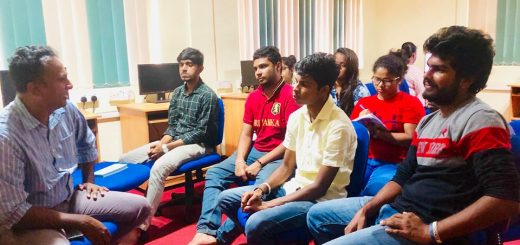Economic aspects of Nature tourism in Sri Lanka
Economic aspects of Nature tourism in Sri Lanka
Auther: Dilini Shashikala
Nature tourism can be defined as any type of tourism that relies on attractions directly related to the natural environment. It is one of the fastest growing sectors of the tourism industry in all over the world and can be expected to increase in the future. Tourism is the third largest export earner in the economy of Sri Lanka at present (Tourism Strategic Plan 2017-2020). The presence of numerous natural resources such as protected areas, marine resources, picturesque beachside around the country and the easy approach to different climates with in the same country with a short time are the reasons for these visitor attractions.
Most international visitors to Sri Lanka engage in mainstream activities, sun and beach, historical and cultural sites, and wildlife viewing. Most popular destinations of domestic tourists are historic and religious sites followed by wildlife and beach sites in the southern coastal belt. Therefore, an increasing trend of Nature tourism can be identified among visitors in the country.
Tourism has become a major economic activity in Sri Lanka, often contributing more foreign currency than traditional primary commodity exports. Since many niche categories of tourism are related to nature tourism, a higher percentage of revenue is generated from nature tourism. Apart from that, generating revenue from domestic tourism, the creation of jobs for local people and improving community welfare contribute positively to the economy of the country.
Protected natural areas are very much popular among visitors at present due to their exceptional natural qualities and their protected status. Due to market failures and imperfections, the entrance fees of the parks do not reflect the true value of the resource which may lead to over-usage of resources causing rapid degradation. Therefore, several techniques have been developed for valuing environmental resources such as Travel Cost Model and Contingent Valuation Model. Using these approaches, an appropriate entrance fee and recreational value can be calculated.
Numerous constraints in the sector are holding its improvement and expansion. Natural resources are subjected to degradation through over use. Negative effects on wildlife, land use conflicts, lack of funding for the maintenance, limited market products, lack of environmental valuation information and visits concentrated on few heavily used sites can be included among these constraints. In order to overcome these issues, proper resource, and fund allocation, strict enforcement of laws, government intervention to the sector, proper nature interpretation and experience to visitors with better management strategies, conduct more research and data analysis on the sector, proper valuation of natural resources and improving sustainable tourism can be implemented.
Key words: nature tourism, Sri Lanka, economic aspects, entrance fee
Subject area: Advanced Economics
Download pdf economic-aspects-of-nature-tourism-in-sri-lanka




